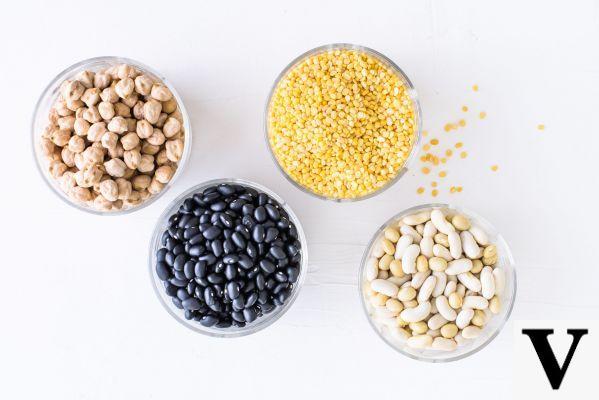
From "meat of the poor" to "smart food", that is, intelligent, crafty food, never to be missed. That legumes are good for health, as well as being economic and eco-sustainable, is now a fact shared by many. This was also revealed by the latest report of the Center for agricultural studies: in recent years the production and therefore the consumption of some species recorded a clear recovery.
That of the gods ceci, for example, has doubled, while that of lentils it has even more than tripled. But some "minor" legumes are also being rediscovered, such as lupine, cicerchia and roveja, until recently completely ignored (to find out more, you can read Minor legumes, Edagricole editions, € 15).
A turnaround also due to the more information on the beneficial properties of these products. And also to the rediscovery by great chefs of gastronomic recipes based on legumes. One for all? The starred chef Massimo Bottura and his "Compression of pasta and beans", a reinterpretation of a classic of the traditional cuisine of the country, with ingredients layered in a small glass.
But let's also find out about them nutritional qualities.
A protein concentrate
"Eaten both fresh and dried, legumes are excellent sources of protein, useful for building and strengthening our muscle mass », says the doctor Nicoletta Bocchino, nutrition biologist in Brindisi. "But be careful: even if these proteins are found in legumes in quantities similar to those found in animal products, being of vegetable origin they have a lower quality. To get the essential amino acids that are missing, however, it is sufficient combine with legumes small doses of cereals, better if integral ".
Some good examples? A plate of pasta and chickpeas or rice and peas or even of buckwheat and lentils. And if you add a side dish of vegetables and extra virgin olive oil, you have a full meal.
A shield against diabetes
Then there are many benefits ensured by legumes to health, also in terms of prevention.
"I am rich in fiber non-soluble, contained in the cellulose of the peel, beneficial for those with constipation problems as they favor intestinal transit», Underlines our expert. “In addition, they contain soluble fibers that work to keep you under control Ldl bad cholesterol levels and those of blood sugar ".
In particular, lentils have proven themselves to be a real anti-diabetes food: from a study published in the scientific journal Clinical Nutrition, which examined more than 4 non-diabetic people at high risk of cardiovascular disease for 3 years, it was found that the consumption of over 3 servings of lentils per week reduces the risk of developing type 35 diabetes by 2%.
The fibers of the legumes also have aprotective action against various tumors. Especially in beans there is an extra gear, as revealed by a study published in the British Journal of Nutrition: they contain phenolic compounds, substances with antioxidant properties which accelerate the death of cancer cells.
Allies of the heart
50% composed of carbohydrates, especially starches, legumes are very low in fat (they contain only 4%) and above all they are free of cholesterol. «For this reason they are particularly suitable for prevention and treatment of cardiovascular diseases, starting from heart attack and stroke », Dr. Nicoletta Bocchino comments.
A source of iron, provided you ...
In addition to the B vitamins, phosphorus and calcium, the legumes are very rich in iron.
"For the body to be able to take it, however, it is important avoid eating the peel because it contains phytates, salts that are "greedy" for this trace element », warns the nutritionist. "The advice is then to make it bioavailable always subjecting the legumes to a long soak, then cook them and finally pass them in the puree in order to remove the peel completely ».
The extra trick is then to associate them with vitamin C, for example by adding lemon juice or lemon zest.
They help lose weight
According to the WHO, the World Health Organization, the consumption of legumes it also helps reduce the risk of obesity. Not only for the high satiating power, but also for the effect of the fibers that slow down the absorption of sugars and fats in the intestine.
In particular, a study conducted by the Institute of St. Michael's Hospital in Toronto showed that eating about 3/4 cup (equal to 130 g) of legumes every day makes you lose 340 g in six weeks. A result that may not be striking, but one that will last over time.
Do they swell you? So remedy it
Intestinal bloating is caused by carbohydrates contained in legumes, which are poorly digested. To reduce the problem, after having them well rinsed to eliminate saponins, substances that alter the flavor, must be put soaking from the night before (except for lentils).
So you have to cook them for a long time (at least 60 minutes, 20 lentils) or at least until easily crushed.
- READ ALSO: Dried or frozen legumes? How to choose them


























